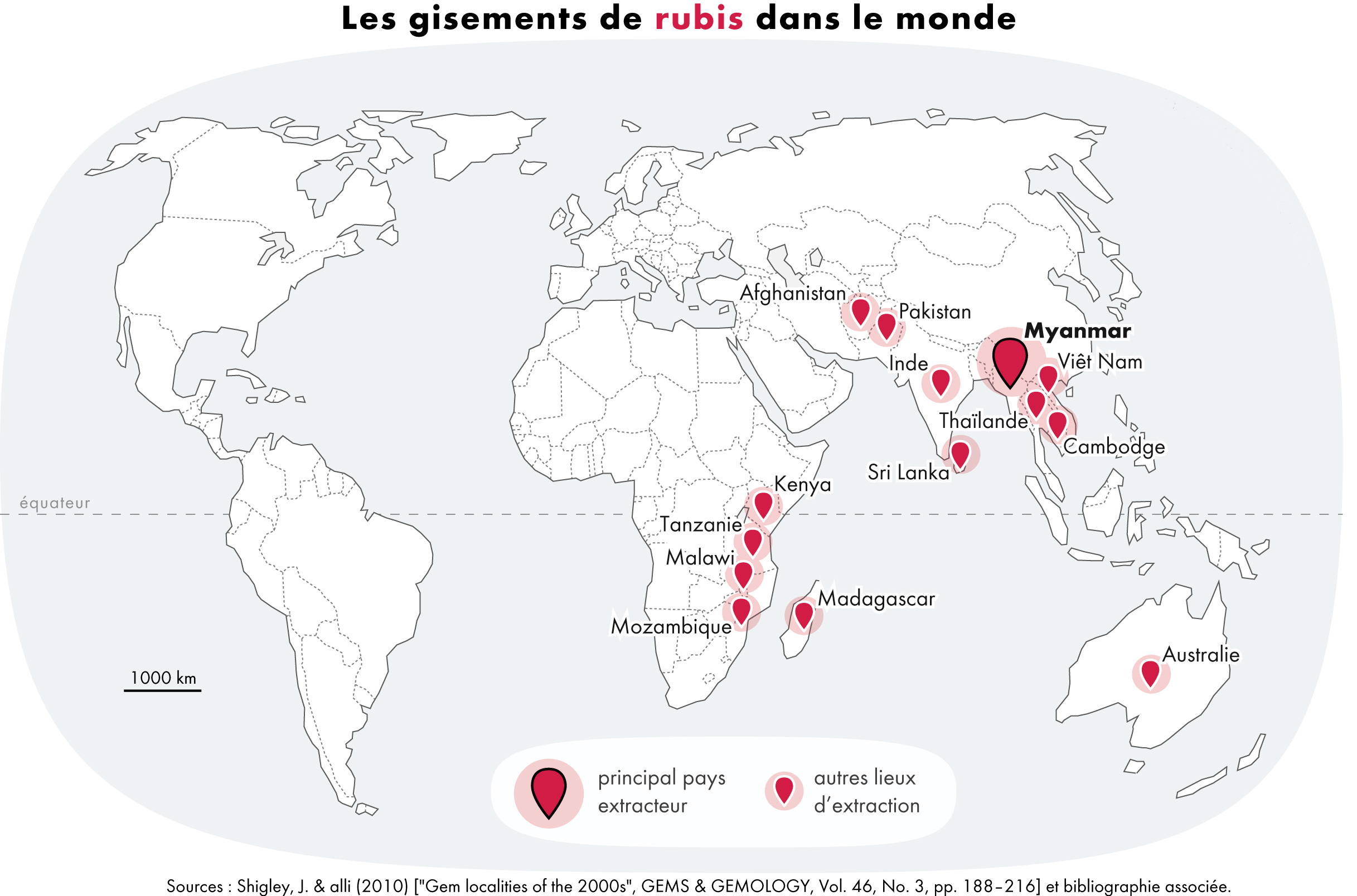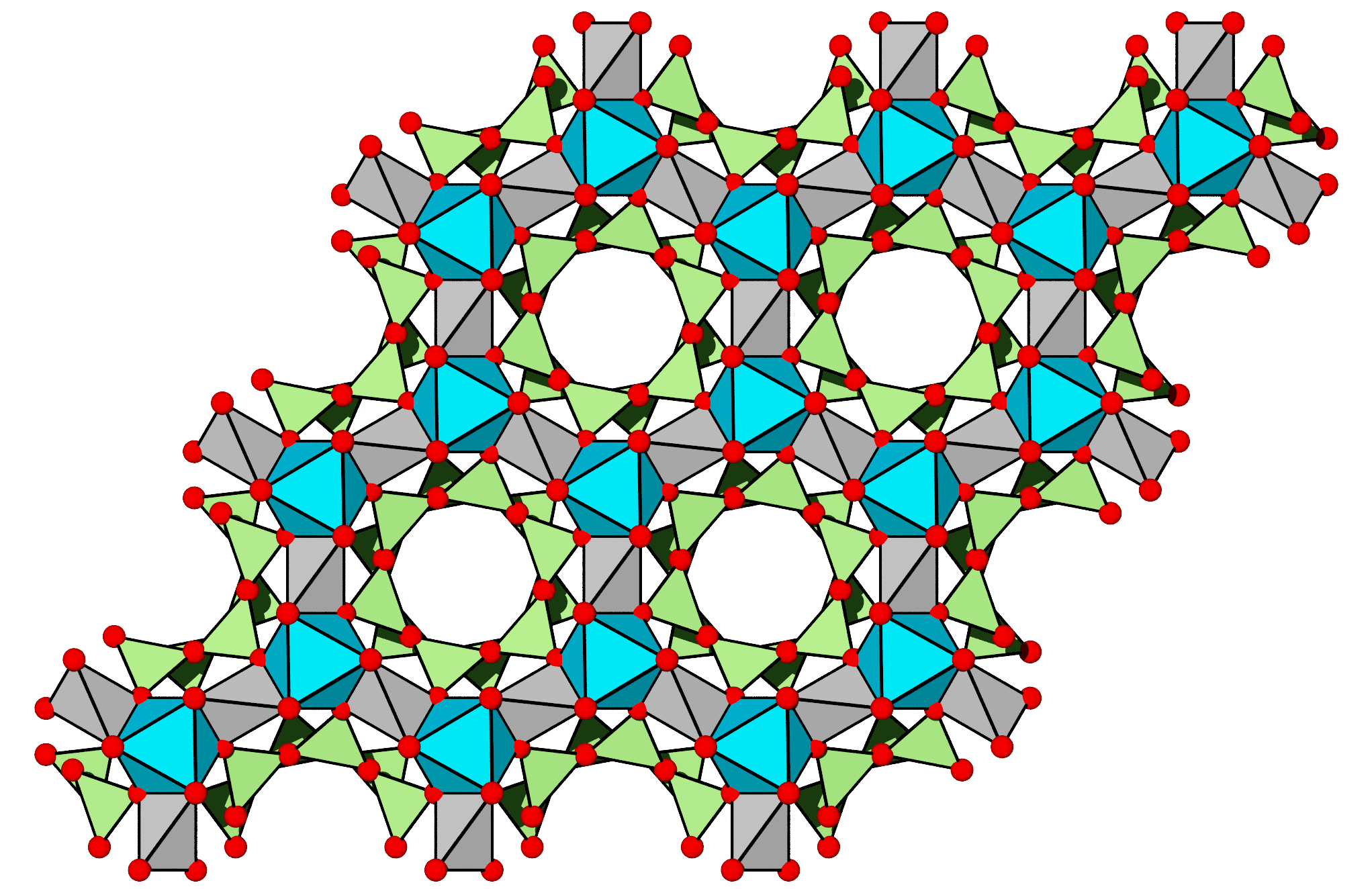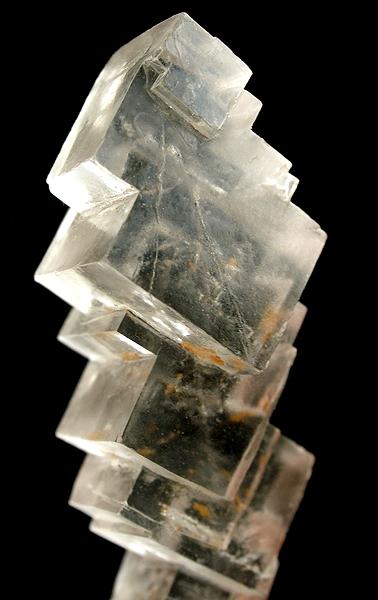|
Geology Of Pakistan
The geology of Pakistan encompasses the varied landscapes that make up the land constituting modern-day Pakistan, which are a blend of its geological history, and its climate over the past few million years. The Geological Survey of Pakistan is the premier agency responsible for studying the country's geology. Tectonic zone Pakistan geologically overlaps both with the Indian and the Eurasian tectonic plates where its Sindh and Punjab provinces lie on the Indian plate while western parts of Balochistan and parts of Khyber-Pakhtunkhwa lie on the Eurasian plate which mainly comprises the Iranian plateau although reaching on the Indian plate, albeit bordering the Arabian plate on the extreme southwest and the Hindu Kush from the Afghan-Pakistan border. Azad Kashmir lie's on the Western Himalaya's while Northern Areas lie on the almost northern end of South Asia most of the region is part of the Greater Himalayan Mountain Region much more close to Central Asia and hence are ... [...More Info...] [...Related Items...] OR: [Wikipedia] [Google] [Baidu] |
Himalaya
The Himalayas, or Himalaya ( ), is a mountain range in Asia, separating the plains of the Indian subcontinent from the Tibetan Plateau. The range has some of the Earth's highest peaks, including the highest, Mount Everest. More than 100 peaks exceeding elevations of above sea level lie in the Himalayas. The Himalayas abut on or cross territories of six countries: Nepal, China, Pakistan, Bhutan, India and Afghanistan. The sovereignty of the range in the Kashmir region is disputed among India, Pakistan, and China. The Himalayan range is bordered on the northwest by the Karakoram and Hindu Kush ranges, on the north by the Tibetan Plateau, and on the south by the Indo-Gangetic Plain. Some of the world's major rivers, the Indus, the Ganges, and the Tsangpo– Brahmaputra, rise in the vicinity of the Himalayas, and their combined drainage basin is home to some 600 million people; 53 million people live in the Himalayas. The Himalayas have profoundly shaped the cultures of ... [...More Info...] [...Related Items...] OR: [Wikipedia] [Google] [Baidu] |
Ruby
Ruby is a pinkish-red-to-blood-red-colored gemstone, a variety of the mineral corundum ( aluminium oxide). Ruby is one of the most popular traditional jewelry gems and is very durable. Other varieties of gem-quality corundum are called sapphires; given that the rest of the corundum species are called as such, rubies are sometimes referred to as "red sapphires". Ruby is one of the traditional cardinal gems, alongside amethyst, sapphire, emerald, and diamond. The word ''ruby'' comes from ''ruber'', Latin for red. The color of a ruby is due to the presence of chromium. Some gemstones that are popularly or historically called rubies, such as the Black Prince's Ruby in the British Imperial State Crown, are actually spinels. These were once known as "Balas rubies". The quality of a ruby is determined by its color, cut, and clarity, which, along with carat weight, affect its value. The brightest and most valuable shade of red, called blood-red or pigeon blood, commands a lar ... [...More Info...] [...Related Items...] OR: [Wikipedia] [Google] [Baidu] |
Topaz
Topaz is a silicate mineral made of aluminium, aluminum and fluorine with the chemical formula aluminium, Alsilicon, Sioxygen, O(fluorine, F, hydroxide, OH). It is used as a gemstone in jewelry and other adornments. Common topaz in its natural state is colorless, though trace element impurities can make it pale blue or golden-brown to yellow-orange. Topaz is often treated with heat or radiation to make it a deep blue, reddish-orange, pale green, pink, or purple. Topaz is a nesosilicate mineral, and more specifically, an aluminosilicate mineral. It is one of the hardest naturally occurring minerals and has a relatively low index of refraction. It has the orthorhombic crystal system and a dipyramidial crystal class. It occurs in many places in the world. Some of the most popular places where topaz is sourced are Brazil and Russia. Topaz is often mined in open pit or alluvial settings. Etymology The word "topaz" is usually believed to be derived (via Old French: Topace and Latin: ... [...More Info...] [...Related Items...] OR: [Wikipedia] [Google] [Baidu] |
Aquamarine (gemstone)
Aquamarine is a pale-blue to light-green variety of the beryl, beryl family, with its name relating to water and sea. The color of aquamarine can be changed by heat, with a goal to enhance its physical appearance (though this practice is frowned upon by collectors and jewelers). It is the birth stone of March. Aquamarine is a fairly common gemstone, rendering it more accessible for purchase, compared to other gems in the beryl family. Overall, its value is determined by weight, color, cut, and clarity. It is transparent to translucent and possesses a hexagonal crystal system. Aquamarine mainly forms in granite pegmatites and hydrothermal veins, and it is a very lengthy process that can take millions of years to form. Aquamarine occurs in many countries over the world, and is most commonly used for jewelry, decoration and its properties. Aquamarine is mainly extracted through open-pit mining, however underground mining is also a possibility to access aquamarine reserves. Aquama ... [...More Info...] [...Related Items...] OR: [Wikipedia] [Google] [Baidu] |
Peridot
Peridot ( ), sometimes called chrysolite, is a yellow-green transparent variety of olivine. Peridot is one of the few gemstones that occur in only one color. Peridot can be found in mafic and ultramafic rocks occurring in lava and peridotite xenoliths of the mantle. The gem occurs in silica-deficient rocks such as volcanic basalt and pallasitic meteorites. Along with diamonds, peridot is one of only two gems observed to be formed not in Earth's crust, but in the molten rock of the upper mantle. Gem-quality peridot is rare on Earth's surface due to its susceptibility to alteration during its movement from deep within the mantle and weathering at the surface. Peridot has a chemical formula of . Peridot is one of the birthstones for the month of August. Etymology The origin of the name ''peridot'' is uncertain. The ''Oxford English Dictionary'' suggests an alteration of Anglo– Norman (classical Latin -), a kind of opal, rather than the Arabic word , meaning "gemstone". Th ... [...More Info...] [...Related Items...] OR: [Wikipedia] [Google] [Baidu] |
Bauxite
Bauxite () is a sedimentary rock with a relatively high aluminium content. It is the world's main source of aluminium and gallium. Bauxite consists mostly of the aluminium minerals gibbsite (), boehmite (γ-AlO(OH)), and diaspore (α-AlO(OH)), Mixture, mixed with the two iron oxides goethite (FeO(OH)) and haematite (), the aluminium Clay minerals, clay mineral kaolinite () and small amounts of anatase () and ilmenite ( or ). Bauxite appears dull in Lustre (mineralogy), luster and is reddish-brown, white, or tan. In 1821, the French people, French geologist Pierre Berthier discovered bauxite near the village of Les Baux-de-Provence, Les Baux in Provence, southern France. Formation Numerous classification schemes have been proposed for bauxite but, , there was no consensus. Vadász (1951) distinguished Laterite, lateritic bauxites (silicate bauxites) from karst bauxite ores (carbonate bauxites): * The carbonate bauxites occur predominantly in Europe, Guyana, Suriname, and ... [...More Info...] [...Related Items...] OR: [Wikipedia] [Google] [Baidu] |
Mineral Salt
Halite ( ), commonly known as rock salt, is a type of salt, the mineral (natural) form of sodium chloride ( Na Cl). Halite forms isometric crystals. The mineral is typically colorless or white, but may also be light blue, dark blue, purple, pink, red, orange, yellow or gray depending on inclusion of other materials, impurities, and structural or isotopic abnormalities in the crystals. It commonly occurs with other evaporite deposit minerals such as several of the sulfates, halides, and borates. The name ''halite'' is derived from the Ancient Greek word for "salt", ἅλς (''háls''). Occurrence Halite dominantly occurs within sedimentary rocks where it has formed from the evaporation of seawater or salty lake water. Vast beds of sedimentary evaporite minerals, including halite, can result from the drying up of enclosed lakes and restricted seas. Such salt beds may be hundreds of meters thick and underlie broad areas. Halite occurs at the surface today in playas in region ... [...More Info...] [...Related Items...] OR: [Wikipedia] [Google] [Baidu] |
Chromite
Chromite is a crystalline mineral composed primarily of iron(II) oxide and chromium(III) oxide compounds. It can be represented by the chemical formula of Iron, FeChromium, Cr2Oxygen, O4. It is an oxide mineral belonging to the spinel group. The element magnesium can substitute for iron in variable amounts as it forms a solid solution with magnesiochromite (Magnesium, MgChromium, Cr2Oxygen, O4). Substitution of the element aluminium can also occur, leading to hercynite (Iron, FeAluminum, Al2Oxygen, O4). Chromite today is mined particularly to make stainless steel through the production of ferrochrome (Iron, FeChromium, Cr), which is an iron-chromium alloy. Chromite grains are commonly found in large mafic igneous intrusions such as the Bushveld in South Africa and India. Chromite is iron-black in color with a metallic Lustre (mineralogy), luster, a dark brown Streak (mineralogy), streak and a hardness on the Mohs scale of mineral hardness, Mohs scale of 5.5. Properties Chromite ... [...More Info...] [...Related Items...] OR: [Wikipedia] [Google] [Baidu] |
Gold
Gold is a chemical element; it has chemical symbol Au (from Latin ) and atomic number 79. In its pure form, it is a brightness, bright, slightly orange-yellow, dense, soft, malleable, and ductile metal. Chemically, gold is a transition metal, a group 11 element, and one of the noble metals. It is one of the least reactivity (chemistry), reactive chemical elements, being the second-lowest in the reactivity series. It is solid under standard temperature and pressure, standard conditions. Gold often occurs in free elemental (native state (metallurgy), native state), as gold nugget, nuggets or grains, in rock (geology), rocks, vein (geology), veins, and alluvial deposits. It occurs in a solid solution series with the native element silver (as in electrum), naturally alloyed with other metals like copper and palladium, and mineral inclusions such as within pyrite. Less commonly, it occurs in minerals as gold compounds, often with tellurium (gold tellurides). Gold is resistant to ... [...More Info...] [...Related Items...] OR: [Wikipedia] [Google] [Baidu] |
Copper
Copper is a chemical element; it has symbol Cu (from Latin ) and atomic number 29. It is a soft, malleable, and ductile metal with very high thermal and electrical conductivity. A freshly exposed surface of pure copper has a pinkish-orange color. Copper is used as a conductor of heat and electricity, as a building material, and as a constituent of various metal alloys, such as sterling silver used in jewelry, cupronickel used to make marine hardware and coins, and constantan used in strain gauges and thermocouples for temperature measurement. Copper is one of the few metals that can occur in nature in a directly usable, unalloyed metallic form. This means that copper is a native metal. This led to very early human use in several regions, from . Thousands of years later, it was the first metal to be smelted from sulfide ores, ; the first metal to be cast into a shape in a mold, ; and the first metal to be purposely alloyed with another metal, tin, to create bronze, ... [...More Info...] [...Related Items...] OR: [Wikipedia] [Google] [Baidu] |
Coal
Coal is a combustible black or brownish-black sedimentary rock, formed as rock strata called coal seams. Coal is mostly carbon with variable amounts of other Chemical element, elements, chiefly hydrogen, sulfur, oxygen, and nitrogen. Coal is a type of fossil fuel, formed when dead plant matter decays into peat which is converted into coal by the heat and pressure of deep burial over millions of years. Vast deposits of coal originate in former wetlands called coal forests that covered much of the Earth's tropical land areas during the late Carboniferous (Pennsylvanian (geology), Pennsylvanian) and Permian times. Coal is used primarily as a fuel. While coal has been known and used for thousands of years, its usage was limited until the Industrial Revolution. With the invention of the steam engine, coal consumption increased. In 2020, coal supplied about a quarter of the world's primary energy and over a third of its Electricity generation, electricity. Some iron and steel-maki ... [...More Info...] [...Related Items...] OR: [Wikipedia] [Google] [Baidu] |








